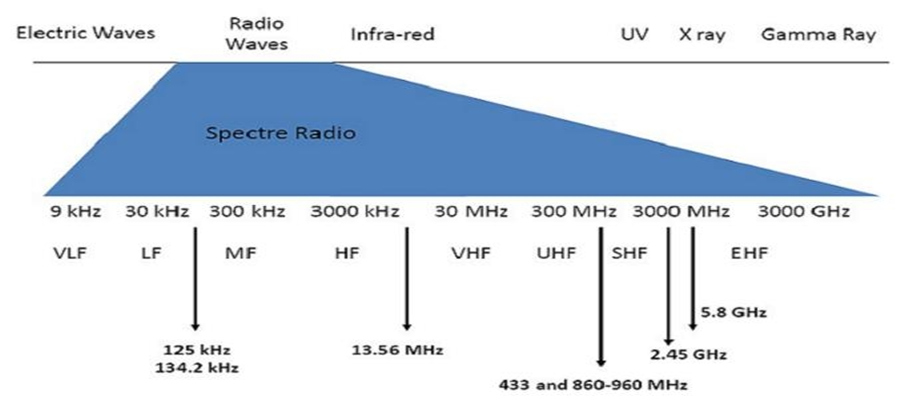RFID is considered as a non specific short range device. It can use frequency bands without a license. Nevertheless, RFID has to be compliant with local regulations (ETSI, FCC etc.)
• LF : 125 kHz – 134,2 kHz : low frequencies,
• HF : 13.56 MHz : high frequencies,
• UHF : 860 MHz – 960 MHz : ultra high frequencies,
• SHF : 2.45 GHz : super high frequencies
• RFID LF tags are well adapted for logistics and traceability applications. Glass tags are small and light. They can used be with all kinds of material – textiles, metals, plastics etc.
• RFID HF tags are used in traceability and logistics applications. Loop antenna can be printed or etched on flexible substrates.
Other information about RFID(except RFID frequency ranges)
RFID is an automatic identification technology offering potential applications in all sectors (retail, health, aeronautic industry, leisure, transportation.)
Active RFID tags and passive RFID tags appears in different form factors: RFID tags, RFID badges, RFID cards.These RFID tags are generally associated with RFID readers connected to the information system. Commonly used RFID frequencies are: RFID LF (125 and 134.2 kHz), RFID HF (13.56 MHz) and RFID UHF (860-960 MHz). For HF RFID, the physical principles and applications are identical to those used for NFC (Near Field Communication) or contactless smart cards. Associated with sensors network, these RFID technologies are the basis for future applications of the Internet of Things (IoT).







